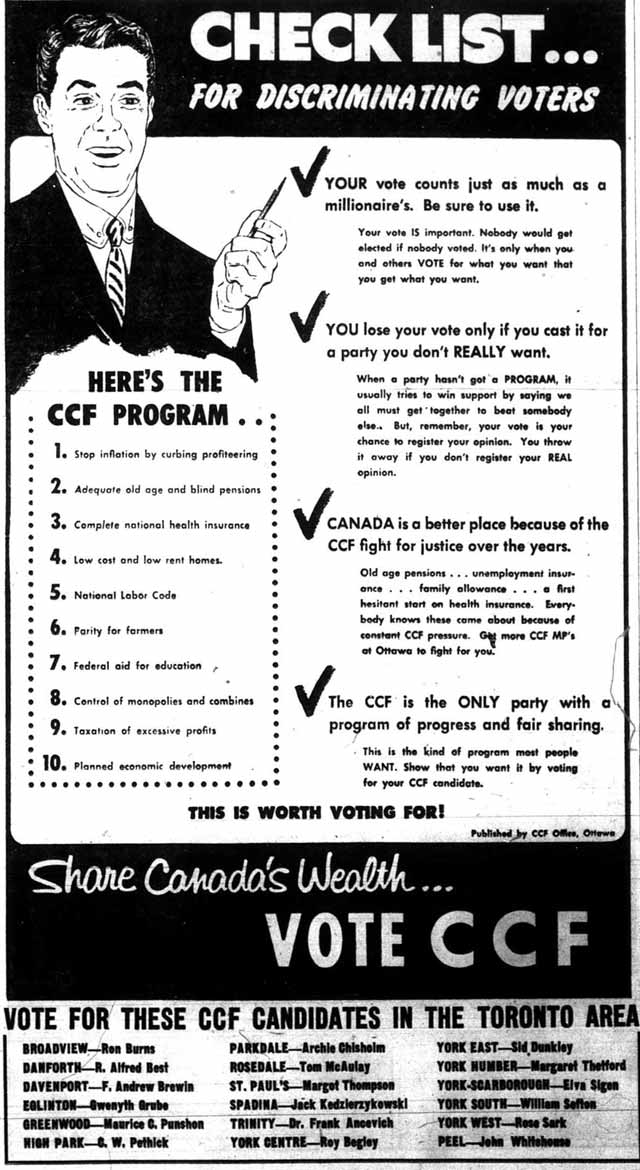Originally published on Torontoist on April 26, 2011.

The Telegram, June 8, 1957.
As the federal election campaign hits its final week, one of the big stories is a series of polls that shows a rise in the NDP’s popularity. Whether the party will retain its current momentum and wind up with a substantial increase in seats remains to be seen. Digging around for old party election ads, we discovered a “checklist for discriminating voters” that the NDP’s predecessor, the Co-operative Commonwealth Federation (CCF) provided for electors back in 1957. While there was a crest of support for an opposition party that year, the tide went with John Diefenbaker’s Progressive Conservatives.
By the 1950s, the CCF wielded influence on social welfare policy that far outweighed its representation on Parliament Hill, and the party was not shy taking credit for inspiring legislation passed by the Liberal administrations of Mackenzie King and Louis St. Laurent. During a party convention in Winnipeg in 1956, the delegates updated parts of the Regina Manifesto to reflect current realities and to make these policies less scary to voters who thought the CCF were no better than Communists: threats to eradicate capitalism were changed to policies supporting public ownership wherever most appropriate.
One claim leveled at the CCF during the 1957 campaign is one which still plagues the NDP (or did until recently, perhaps): that a vote for the party is a wasted ballot. Though aimed specifically at voters in Prince Albert, Saskatchewan, a press release from Saskatchewan Premier Tommy Douglas could have applied to dithering voters in Toronto too:
In this constituency you are being told that you will be wasting your vote by voting CCF. The fact remains that over the past quarter of a century every important economic reform and every piece of progressive social legislation has been popularized by the CCF and has been forced upon a timid and reluctant government. The Liberal Party does not need a bigger majority. What it needs is to be shaken out of its complacency and indifference.
With limited resources to run a federal campaign, the CCF relied more on dedicated volunteers than hired staff. Newspaper ads such as today’s featured item appeared in conjunction with one of the party’s few CBC radio and television spots. Maybe the party should have plastered each candidate’s photo in this ad, as the other major parties did: the best results local CCF candidates mustered were second-place finishes in Danforth and Greenwood. The party lost the only local seat it won in the previous election (York South, where MP Joseph Noseworthy served until his death in March 1956) and would not win again federally until future party leader David Lewis recaptured it in 1962.
Nationally, the results were slightly brighter: the CCF gained two seats for 25 overall. The party’s most stunning performance in Ontario was in Port Arthur, where schoolteacher (and future Telegram and Sun parliamentary columnist) Douglas Fisher knocked off “minister of everything” C.D. Howe.
Additional material from The Canadian General Election of 1957 by John Meisel (Toronto: University of Toronto Press, 1962).